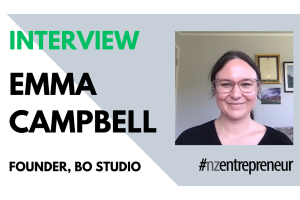
Like any good design, a good website should be created with the user in mind. That sounds obvious, but it is often overlooked when you are faced with the seemingly huge task of building a new website.
The traditional navigation breakdown of a website often presents a business a period of jarring introspection as they reflect more deeply than usual upon their story. The result is that it can become more about them and the business itself, rather than the person using it.
The other key consideration is cost. Using a template is often considered far more cost effective. On paper that’s patently true – provided you stay within the confines of the template. However, if you decide to go beyond those confines, things can get a little muddier.
At the core of it all, though, is that once a website is live, it immediately starts to measure user interactions. If you haven’t thought about them until you’re live, it’s too late. So, it pays to focus on them right up front: think about what success measures you require from your key users for your website, and then go about engineering them.
Finding an appropriate template to suit your particular success measures can take a bit of luck. If you can, then that’s wonderful (we love it when we find the right one ourselves) and as a bonus there are thousands of beautiful templates out there. If it kind of suits the mould, then unfortunately you should probably keep looking, or take advantage of some of the more powerful and emerging technology out there. The key is to know when a template will meet the needs of your users – and when it won’t.
Making the choice a little more nuanced is the abundance of good template options available. There are some beautiful websites available ‘out of the box’ from the most popular platforms: WordPress, Squarespace and Wix offer a multitude of professional looking solutions for businesses of all shapes and sizes.
And here’s the thing. If you do find a great looking template that closely matches the planned structure of your website, go for it. It will probably work out just fine (and, you guessed it, this is the reason for the quantity and quality of templates available – they often are pretty close to perfect for a wide variety of businesses).
Squarespace, particularly, stands out for those who don’t want to spend on development costs, as anyone can create a website using this service. In saying that, simply thinking ‘anyone can do it’ implies ease; that isn’t always borne out. It can be painful at times, especially when it comes to the trickery of shifting from an old site to a new one, as managing server transfers is time consuming for the uninitiated.
Where the template option quickly becomes unworkable is when you find one that is almost there but just needs a little ‘tweaking’ from a developer… ‘that way madness lies’.
It can be quite easy at the start, but the reality is that you are bolting something on that isn’t part of the framework built by the people who created your template in the first place. They are constantly making updates to keep that template running (something to always take into consideration as well) without your ‘tweak’ in mind. This means that any point that they make an update could mean the end for your tweak. The result is ongoing maintenance costs – something that needs to be considered up front as opposed to ‘we can figure that out once it’s live’.
At this point, a custom site can start to make more sense.
What I have found is that this point is often reached when a local eCommerce website needs to make the shift to selling to a global audience. Owing to the substantial increase in variables – such as the obvious ones: language, shipping and currency rules – things quickly get too complicated for the preferred template to handle, especially with the ROI risk that comes with losing this audience.
The temptation can be great to stick with the template anyway – after all, it is always technically doable. It needs to come with accepting that your future web investments will partly be going into patching things up, instead of refining and optimising.
For our own website, we prefer putting that time and budget into making an already amazing website sing.
Finally, the good news – particularly for startups – is that it is no longer strictly an ‘either/or’ question. Design technology such as Sketch, Craft/Invision and Webflow allows a deeper exploration of web design, which can then be exported along with a base layer of code for the web developer. This reduces the development time usually required, while delivering an execution much closer to the original vision you signed off on. Effectively the combination of these technologies means that there is less development time (AKA cost) needed to get a result that is aligned with the design, which in the right hands will deliver you a far superior website.








